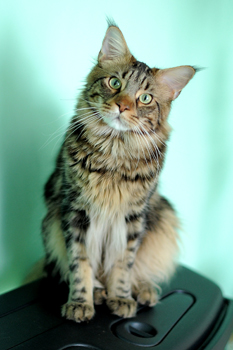Once you have arrived back home, the first job is to get your films processed or your digital images safely backed-up. For film users, choose a lab you have used before and in which you therefore have confidence. There is nothing worse than seeing good images ruined by poor processing or handling.
Prints have an immediate impact because they can be looked at conveniently over a cup of coffee. Friends and family will also want to see evidence of the exotic adventures you have described. Take care to keep prints in the correct envelope together with the relevant negatives. When handing them around a group of people it is all too easy to get them in a muddle. The index prints provided by some processing labs are useful from this point of view. The best images can then be transferred into albums, and those that are no longer required can be discarded. This selection process is important because people are more likely to want to look at a few good images than at volumes of mediocre material. More importantly, the photographs that failed for various reasons should be reviewed in a constructive frame of mind. They will almost certainly reveal ways in which your photography could improve.
 |
| Public domain image by laser 1985 - freeimages.com |
Slides should also be sent to a lab you know and trust. It just is not worth the risk of losing or damaging material from faraway locations to which you may never return. In some developed countries is might be worth getting a few rolls processed to check your results. Where there is any doubt about the quality of the processing it is obviously better to take exposed material home unprocessed. Professional labs generally return slide film cut into strips and stored in plastic sleeves. Amateur stock is normally mounted and packed in small boxes. The strips are easier to store but mounted slides are easier to sort and select. Slides are also somewhat less convenient to view than prints but transmitted light from a light box or projector produces a quality and translucence without equal. It is also useful to be able to assess positive first generation images - ie without colour reversal.
Most black-and-white film stock requires different processing chemistry from colour slides or negatives. It is necessary to find an appropriate lab. The only way around this is to use chromogenic monochrome film that is specifically designed for C41 (colour negative) processing. When the negatives are printed, ask the lab to use black-and-white paper as this eliminates any possible colour cast in the final prints.
Digital images must be safely backed-up to avoid any possibility of accidental alteration or deletion. How this is done depends upon the workflow you adopt. Some photographers carry sufficient memory cards to meet their requirements, and download the images directly to a computer, deleting unwanted material as they do so. Others use a portable high-capacity hard disk and download the best images from memory cards in the field. Some carry a portable computer or a stand-alone CD or DVD writer and write CDs as they travel. In any event, the DVD is arguably the safest medium for back up, so good images should be transferred to this medium as soon as possible. Whatever system you use, be careful not to delete images until you are sure they are not required. It is also easy to make mistakes when downloading and assessing hundreds of images at the end of a long and tiring day.